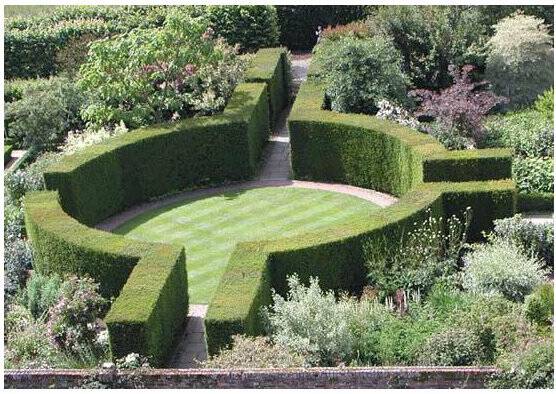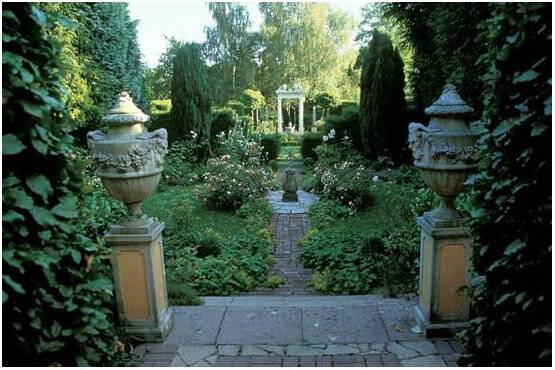As we’ve previously discussed, the four visual tools of landscape design – lines, color, form and texture – are some of the most powerful elements of a landscape because of what they add to the space visually. However, there are still other landscape design principles that are essential for creating the perfect space to call your own. These principles, which include axial relationships; focalization; symmetry vs. asymmetry; repetition and rhythm; light and shadow; proportion and scale; and reflection, play an important role not only in how a landscape looks, but also in “describ[ing] why a garden visually works.”
Let’s take a closer look at each.
Axial relationships have a very profound effect on landscapes. They are generally created when a pathway or a line of trees extends from its starting point to a visual focal point at the other end. Cross-axial designs are created as two lines intersect, and in many cases, create the structural foundation for the space. Axial and cross-axial designs have tremendous power in directing the eyes to certain visual elements of a garden, and are extremely useful in distracting the eyes from an unattractive area of the garden.

Focalization is the technique we use to make “order out of chaos” by giving the eyes a point their line of sight can be funneled to. These focal points can be as simple as a planter filled with colorful blooms or as extravagant as a statue or a one-of-a-kind fountain. Focalization can also be used to frame a view and is almost always included in axial and cross-axial designs.

In landscape design, symmetry and asymmetry are often associated with order and chaos. Symmetry, or order, is achieved by striking a balance of shape, form and volume on both sides of the centerpiece of the garden or along an axis. Symmetry is a hallmark feature of most formal, traditional gardens, while asymmetrical designs are generally found in those with Asian or contemporary influences.

Similar forms repeated at either regular or irregular intervals create rhythmic results in a garden. When these forms repeat in a single direction, the rhythmic movement created grows stronger. This technique creates harmony and unity within the space. One of the most common examples of repetition and rhythm in landscape design is the incorporation of boxwoods. However, clipped cedars are also useful in incorporating this principle of design, as they add authority and sophistication.

We’ll take a closer look at the design principles of light and shadow; proportion and scale; and reflection in the near future, so stay tuned for more.
And if you’re in need of assistance in incorporating principles like these into your garden oasis, contact Dargan Landscape Architects. Virtually or in person, we can help you create a master plan or a tune-up for your garden. Contact us for more information. Also, for more information on these principles of landscape design, check out Mary Palmer’s book, Timeless Landscape Design.